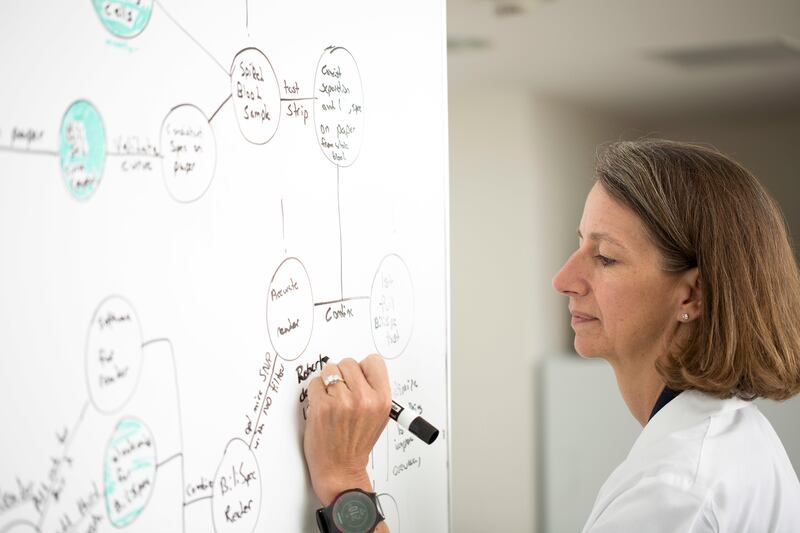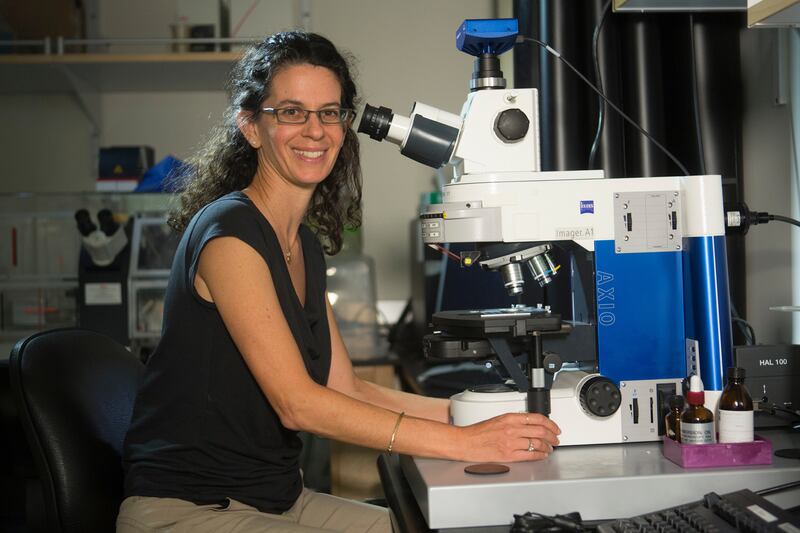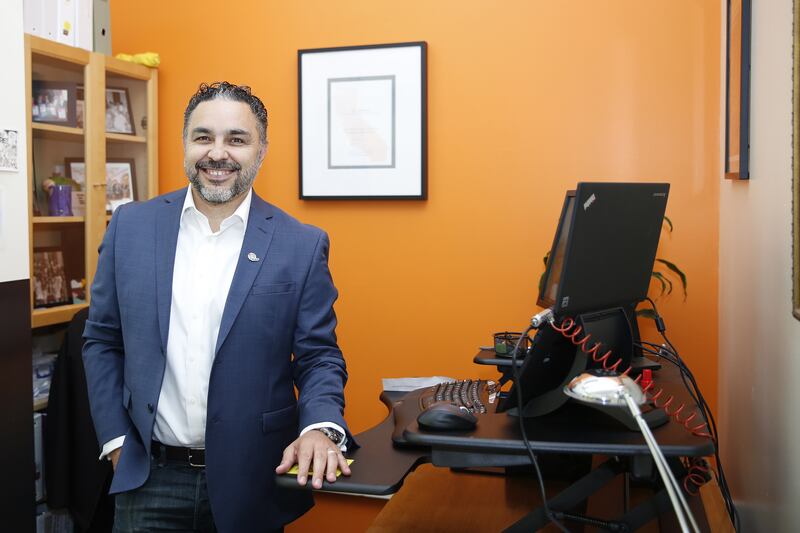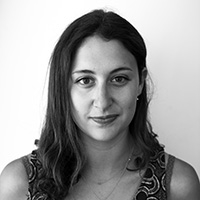The 23 MacArthur Genius Grant Winners for 2016 were announced on Thursday and already we’re all feeling a bit inferior. This year’s winners include playwrights, art historians, graphic novelists, microbiologists, bioengineers, computer scientists, and a “financial services innovator.”
One of the nation’s largest independent foundations, the MacArthur Foundation has been giving out grants beginning in 1978 and since then has reportedly donated over five billion dollars in the United States and almost 50 other countries. Since 1981, 942 people have been named MacArthur Fellows, with the youngest individual being 18 years old.
The current MacArthur grant are described as “no-strings-attached awards” and total $625,000 paid over five years. According to the foundation, “although nominees are reviewed for their achievements, the fellowship is not a lifetime achievement award, but rather an investment in a person's originality, insight, and potential.”
MacArthur foundation president Julia Stasch described this year’s winners as “extraordinary individuals” who “are breaking new ground in areas of public concern, in the arts, and in the sciences, often in unexpected ways. Their creativity, dedication, and impact inspire us all.”
These are some of the most notable 2016 grant winners (but remember, they’re all ‘geniuses’):
Branden Jacobs-Jenkins, 31- Playwright

The youngest winner of the 2016 award, Jacobs-Jenkins is a 31-year-old playwright from New York City who studied at Princeton University and Juilliard. He has written five plays since 2010, all of which deal with issues surrounding identity, race, and class. According to his MacArthur profile, many of his plays “use a historical lens to satirize and comment on modern culture,” creating “unsettling, shocking often confrontational moments.” He earned the 2014 Obie Award for Best New American Play for Appropriate and An Octoroon, and his play Gloria was a 2016 Pulitzer Prize for Drama finalist.
Rebecca Richards-Kortum, 52- Bioengineer

Dedicated to tackling “global health disparities in low-resource settings,” Richards-Kortum, a Professor at Rice University, has developed new point-of-care medical technologies. She’s spent a time in Malawi, Rwanda, El Salvador, and Brazil working with rural practitioners attempting to counter “the challenges posed by invasive biopsies and multiple follow-up appointments.” One of her projects includes a portable, high-resolution microendoscope, which allows for “real-time diagnosis and treatment of cervical cancer in a single visit.” She is also a co-founder of Beyond Traditional Borders (BTB), an undergraduate curriculum which focuses on developing solutions for global health problems. One of the new technologies developed by BTB students includes “an LED-based phototherapy light for treating jaundice in newborns that can be made for less than $100.”
Daryl Baldwin, 53- Linguist and Cultural Preservationist

Baldwin is currently the Director of the Myaamia Center, which studies the cultural, intellectual, and linguistic heritage of the Miami (Myaamia) nation, Native Americans who were forcibly removed from their native homeland in the Great Lakes region. A trained linguist, Baldwin taught himself and his family the Miami language, using historical documentation and the aid of fellow linguists. Focused on restoring use of the Miami language and “importing cultural knowledge to present-day Myaamia descendants,” Baldwin helped create a “tribal-academic” partnership between the Miami nation and Miami University in Ohio. A great deal of his work focuses on preserving Myaamia traditions, including their lunar calendar and “ethnobotany practices.”
Dianne Newman, 44, Microbiologist

Trained in environmental engineering, Earth Science, molecular genetics, and geobiology, Newman brings together this interdisciplinary knowledge “to study the evolution of ancient microbes’ metabolic process” and how they affect the chemistry and biology of their environments. Studying how ancient bacteria survived and thrived in an oxygen-poor environment has yielded important insights on how modern bacterial communities can grow in low-oxygen environments, information that has important biomedical applications.
José A. Quiñonez, 45, Financial Services Innovator

Dedicated to providing minority, immigrant, and low-income households with safe loans, Quiñonez has worked to create “a pathway to mainstream financial services and non-predatory credit for individuals with limited or no financial access.” By adapting traditional cultural practices from Asia, Africa, and Latin America, the founder of the Mission Asset Fund has developed a mechanism that helps them build credit history.
Mary Reid Kelley, 37, Video Artist

Through poignant, thoughtful, and creative videos, Kelley uses a variety of creative techniques to address gender roles in historical narratives. Many of her scripts are written in structured poetic verse, often containing “puns, literary allusions, double entendre, and other varieties of language play.” Together with her partner, Patrick Kelley, Mary Reid designs the all of the sets, props, costumes, and performs the leading roles in all of her pieces.
HONORABLE MENTIONS:
Ahilan Arulanantham, 43, Human Rights Lawyer
Arulanantham is an attorney in Los Angeles who has worked tirelessly to expand “immigrant detainees’ access to legal representation.” He has also successfully litigated a series of precedent-creating cases, which have, in part, limited the government’s capacity to detain immigrants indefinitely.
Anne Basting, 51, Theater Artist and Educator
Through a myriad of formats, including theater, memoir, collaborative public performance, and academic research, Basting has worked to improve the lives of elderly individuals with cognitive impairment. Her major project, entitled TimeSlips, is an “improvisational storytelling method,” in which subjects create stories and poems in response to specific cues. Used to create a theater piece with the Luther Manor Home in Wisconsin in 2000, Basting has since modified TimeSlips to create “a formal therapy protocol.”
Vincent Fecteau, 47, Sculptor
Through works created of collaged paper, papier-mâché, and cardboard, Fecteau creates sculptures that “make the viewer aware of the act of perception.” His untitled artworks from 2010 “can be rotated and reversed to offer multiple presentations of their surfaces” and promote prolonged engagement and reflection.
Kellie Jones, 57, Art Historian and Curator
A professor at Columbia University, Jones has fought to expand the influence of contemporary art of the African Diaspora and dedicated herself to “securing its place in the canons of modern and contemporary art.” She has played a critical role in introducing audiences to “now seminal black artists” and campaigned to highlight the work of “overlooked black artists.”
Josh Kun, 45, Cultural Historian
Kun is a cultural historian and professor of Communication at the Annenberg School for Communication and Journalism at the University of Southern California. His work focuses on examining how “arts and popular culture are conduits for cross-cultural exchange.” Kuns more recent projects have centered on the diverse culture of Los Angeles, “bringing present-day communities together around historical intersections of cultural expression.”
Subhash Khot, 38, Theoretical Computer Scientist
A great deal of Khot’s work centers on understanding the limitations of computing. He has worked extensively on the Unique Games Conjecture (UGC) which has led to new theorem in geometry and the stability of different election systems.
Maggie Nelson, 43, Writer
A nonfiction writer, Nelson has blended personal and intellectual exploration, addressing “feminist and queer theory, cultural and art criticism, philosophy and psychology,” among other subjects. Her novel The Red Parts (2007) investigates the impact of sexual violence and “media spectacle,” drawing considerable influence from the trial of her aunt’s suspected murderer.
Victoria Orphan, 44, Geobiologist
Through her investigation of microbial communities living in extreme environments, Orphan has shed new light on how these life forms influence the cycling of nutrients in the ocean. In one research project, Orphan and colleagues demonstrated that some deep-sea microbes are able to consume methane that would otherwise contribute to the buildup of greenhouse gases in Earth’s atmosphere.
Manu Prakash, 36, Physical Biologist and Inventor
Dedicated to “democratizing the experience and joy of science globally,” Prakash has developed a variety of devices that facilitate “frugal science,” such as lightweight optical microscopes that are low-cost, accessible, and “appropriate for use in low-resource and field settings.” He has also studied physical computation and developed new theories on how computers may be able to manipulate physical matter, as well as information.
Claudia Rankine, 53, Poet
The author of five poetry collections and a professor of poetry at Yale University, Rankine has explored issues such as motherhood, post-9/11 culture, contemporary racism, and affirmative action. She has more recently engaged in conversations about racial violence through lectures, essays, and Situations, a series of short films.
Lauren Redniss, 42, Artist and Writer
Using archival research, interviews, and field expeditions, Redniss labors to integrate her text with artwork to create “works of visual nonfiction.” Focusing on each aspect of her books’ creation, including the typeface, page layout, illustrations, and text itself, Redniss is credited with pioneering a new form of visual storytelling.
Joyce J. Scott, 67, Jewelery Maker and Sculptor
Using beadwork and other crafts to articulate her “commentary on social and political injustices,” Scott challenges the notion that jewelry or beadwork is “merely for adornment.” In “The Mammy/Nanny Series,” the artist addressed the role of African American women and domestic servants. Scott’s dark humor can also be seen in works such as “Ancestry/Progeny” (2008) which depicts “two parents who have been passing as white feigning shock and dismay at their dark-skinned child” and her performance art pieces which expose stereotypes about the black female body.
Sarah Stillman, 32, Long-Form Journalist
Investigating stories “usually invisible to mainstream reporting,” Stillman has examined the conditions of foreign logistics workers on American bases in Iraq and Afghanistan, covered the kidnapping of undocumented minors at the Mexican border, and taken a critical look at the criminal justice system.
Bill Thies, 38, Computer Scientist
Challenges like financial constraints, limited internet access, and illiteracy are some of the many challenges Thies aims to combat when creating new communication and digital technologies. Recognized as “a leader in the field of Information and Communication Technologies for Development),” Thies integrates his knowledge of computer science with “a deep understanding of the real-world constraints and needs of the communities in rural India he hopes to reach.”
Julia Wolfe, 57, Composer
Combining diverse musical influences, Wolfe grounds her pieces in “historical and legendary narratives.” One of her most recent projects, Anthracite Fields (2014), was built upon the foundation of a year of research on coal mining communities in Pennsylvania and integrates oral histories.
Gene Luen Yang, 43, Graphic Novelist
A producers of short stories, serial comics, and full-length graphic novels for young adults, Yang applies “a contemporary Chinese American lens” to his creative and influential work. Through projects like American-Born Chinese (2006) and Boxers and Saints (2001), Yang “demonstrates the potential of comics to broaden our understanding of diverse cultures and people.”
Jin-Quan Yu, 50, Synthetic Chemist
Pioneering new techniques for manipulating carbon-hydrogen bonds, Yu’s work is laying the foundation for countless new pharmaceuticals and agrochemicals (like pesticides and fertilizers). Yu’s work will undoubtedly facilitate the creation of hundreds of new chemical compounds “with enormous benefits to academic, industrial, and pharmaceutical research.”






